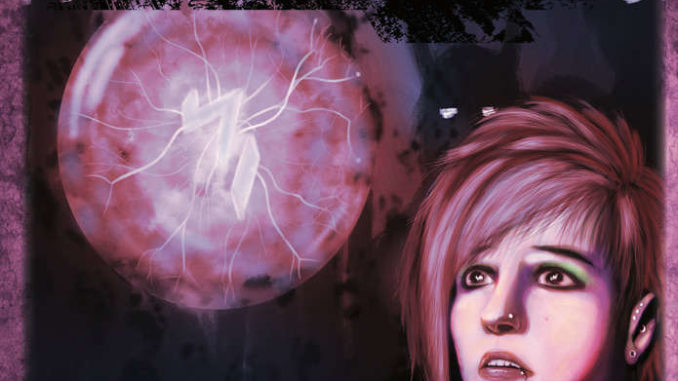
On Halloween 2017, I shared an interview with CJ Hurtt about Glimpse the Beyond Second Edition (GtB2e) from Aegis Studios. Written by CJ, developed by Travis Legge (owner of Aegis Studios), and including artwork by Mary Madewell, this Streets & Sorcery tabletop RPG has been on my mind after reviewing Dark Streets & Darker Secrets. Since Travis Legge and I talked about his latest projects and I asked about GtB2e briefly, I decided to pull out my RPG-View Copy of the game to see how it reads.
What is Glimpse the Beyond Second Edition?
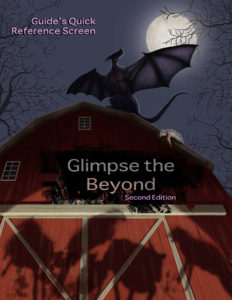 Beyond the Streets & Sorcery RPG description, this is the modern world with an underlying veneer of magic, Magi, and Things that Should Not Be. You are a Magi, a sorcerer, who, likely, uses your magic to deal with those dark forces of urban legend and cosmic horror. The world is something of an action-centric Cthulhu meets the Dresden Files. With that high level view, let me dig into the engine.
Beyond the Streets & Sorcery RPG description, this is the modern world with an underlying veneer of magic, Magi, and Things that Should Not Be. You are a Magi, a sorcerer, who, likely, uses your magic to deal with those dark forces of urban legend and cosmic horror. The world is something of an action-centric Cthulhu meets the Dresden Files. With that high level view, let me dig into the engine.
Character Creation and Combat
Character creation in GtB2e is done via a point buy system. You have allotments for Abilities, Skills, and starting Equipment. Each point spent improves a stat in a one-to-one ratio. Abilities (Physique, Intellect, Charisma, Grace, Spirit, and Will) have a rating from one to five. With 15 starting points to spend on these six stats, expect your character to be middle-of-the-road, or they’ll have some exceptional stats as well as several weak Abilities. To augment the results, you can invest in Flaws that generate points to spend on improving your Abilities (more below).
Tenacity Traits (Health, Poise, and Sanity) are derived from your Abilities. Health, your Hit Points, is generated by multiplying Physique and Grace giving you a range of 1 to 25 Health starting. After your Health is exhausted, hits degrade your Physique until that’s exhausted and your character expires. Poise represents your ability to resist social pressure and deal out your own social pressure. This Tenacity Trait works in a similar fashion as Health in that Intellect is multiplied by Will to get your score and when it hits zero, social damage goes against your Will levels. Since you face off against some cosmic horror, there’s a Sanity stat and it is treated like the other two Tenacity Traits, only it represents your ability to deal with hardships and supernatural horrors.
The game offers Boons and Flaws. Boons grant an extra ability, while Flaws hamper your character but provide additional points to spend on Skills or Abilities. These additional points are not as good as the starting points, which provide one level of increase per point spent; instead these have various costs. Beyond Boons and Flaws, characters may end up with Disorders and Derangements (mental issues of all types and another nod to sanity mechanics that are common components of cosmic horror games).
For equipment, it ranges from everyday items to weapons to vehicles. Armor has an Armor Rating meaning, “Any Result Points that exceed the character’s worn Armor Rating cause one damage each.”
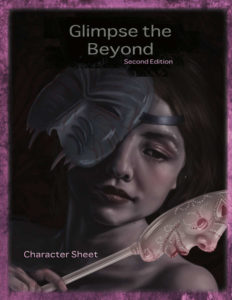 Like many RPGs, this one is built around Target Numbers. For everything, you roll against Target Numbers (TNs) to determine if you succeed or fail. Target Numbers range from Simple (TN2) to Impossible (TN40).
Like many RPGs, this one is built around Target Numbers. For everything, you roll against Target Numbers (TNs) to determine if you succeed or fail. Target Numbers range from Simple (TN2) to Impossible (TN40).
Your dice pool and results for all rolls is created through a combination of an Attribute and a Skill. You roll a number of dice equal to your Attribute and, from that roll, take the highest single die. Multiple that die’s result by the appropriate Skill to find your result. If you have Equipment or some other bonus, it adds to your Skill so you use that increased Skill value to multiple the high die against.
What happens if you don’t have the appropriate Skill for a check? Then you are Unskilled and will most likely fail. For an unskilled check, roll your Ability as normal but subtract the lowest die result from the highest leaving you with a score of 0 to 5 (unless you crit). This means you can only hope to achieve a Simple (TN2) or Easy (TN5) result. There are 12 Target Numbers, or Magnitudes (the amount of power that a spell’s effect requires), above that so, you know, if you don’t have a Skill, you don’t have a chance.
There is an interesting Crit system. If you roll multiple 6s, they add to your roll results. If you roll three 6s, the high die result jumps from a 6 to an 8, and then you multiple that result by the Skill.
For combat, Initiative is 1d6 plus your defense stat for the type of conflict you’re in. Thus, physical combat uses Grace while social combat uses Spirit. In combat, physical attacks use Abilities like Physique or “Grace if weapons are being used.” For social combat, the PC utilizes “Intellect for outfoxing your opponent and Spirit for not letting the game drive you mad.”
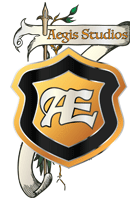 You land a punch by rolling Physique (for the number of d6s to roll) and Close Combat (for the multiplier). The target rolls Grace and Close Combat to avoid the punch.
You land a punch by rolling Physique (for the number of d6s to roll) and Close Combat (for the multiplier). The target rolls Grace and Close Combat to avoid the punch.
Flipping this over to a weapon attack, if your attack succeeds, the damage it deals is equal to the weapon’s Equipment Rating plus any Result Points (the difference between the TN and your result) minus the Armor Rating. Result Points can be spent to boost damage or allow Maneuvers such as pushing your opponent or disarming them.
Healing is very old school. Health heals at the rate of a point a night. Physique, the next type of damage after Health, heals one point per four nights. While you can go to the hospital, it’s still takes time to recover. Like so many games, the rule of thumb is don’t get hurt and then need to go on another adventure that month.
What Do You Fight?
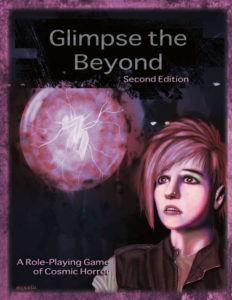 In this book, there’s one monster-related chapter with two sections. The first section are the monsters, 17 to be exact. They range from cultists (Court of the Yellow King Cultists) to ghosts to the Jersey Devil, Slender Man, and more. It’s a mix of horrors, cryptids, and odds and ends. There are 12 NPCs to augment the number of ready-made characters for the game.
In this book, there’s one monster-related chapter with two sections. The first section are the monsters, 17 to be exact. They range from cultists (Court of the Yellow King Cultists) to ghosts to the Jersey Devil, Slender Man, and more. It’s a mix of horrors, cryptids, and odds and ends. There are 12 NPCs to augment the number of ready-made characters for the game.
But, the combined roster is only 29 deep which brings us to the other section, “Building Creatures.” This section includes rules for creating unique monsters with a variety of powers, five-and-a-half pages worth to be exact.
To fight the monsters (or augment them) there are magic items. Options to add more magic and mystery to your game. Like D&D and other fantasy games, magic items help add flavor to the setting.
Charts
In Glimpse The Beyond Second Edition, your actions will be defined by distance, time, and visibility in many instances. Many of these measures are collected in charts, many of which are combined toward the end of the book, giving a nice amount of quick reference.
Style
This game is something of a What If? in terms of style. In this case it is something like: Cthulhu: The Awakening, a “What if the World of Darkness met H.P. Lovecraft?” Not quite Cthulhu because it’s more of a generic flavor of madness than Lovecraft’s writing, and not quite World of Darkness because you’re not playing the monster. Nevertheless, the book’s style is lifted from those sources with frequent short fiction interspersed in the game to give the feel of the world. Much like WoD, this book is about the feel of the world, not just the rules.
Should You Glimpse the Beyond?
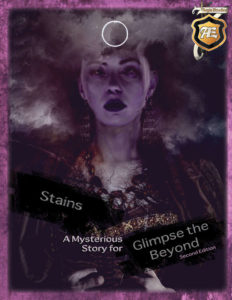 If you want a game that let’s you play mages fighting America’s folklore or Lovecraft’s minions, but with the feel of White Wolf’s World of Darkness, this game will speak to you. Since it’s a second edition, it’s been reworked and improved by feedback from the gaming table.
If you want a game that let’s you play mages fighting America’s folklore or Lovecraft’s minions, but with the feel of White Wolf’s World of Darkness, this game will speak to you. Since it’s a second edition, it’s been reworked and improved by feedback from the gaming table.
Glimpse the Beyond Second Edition (GtB2e) from Aegis Studios is available at DriveThruRPG. You can get free characters sheets (regular and interactive) as well as a GM’s Screen and another adventure, Stains.
Egg Embry participates in the OneBookShelf Affiliate Program. This program provides advertising fees by linking to DriveThruRPG.
Latest posts by Egg Embry (see all)
- New Gamemaster Month 2023 - January 20, 2023
